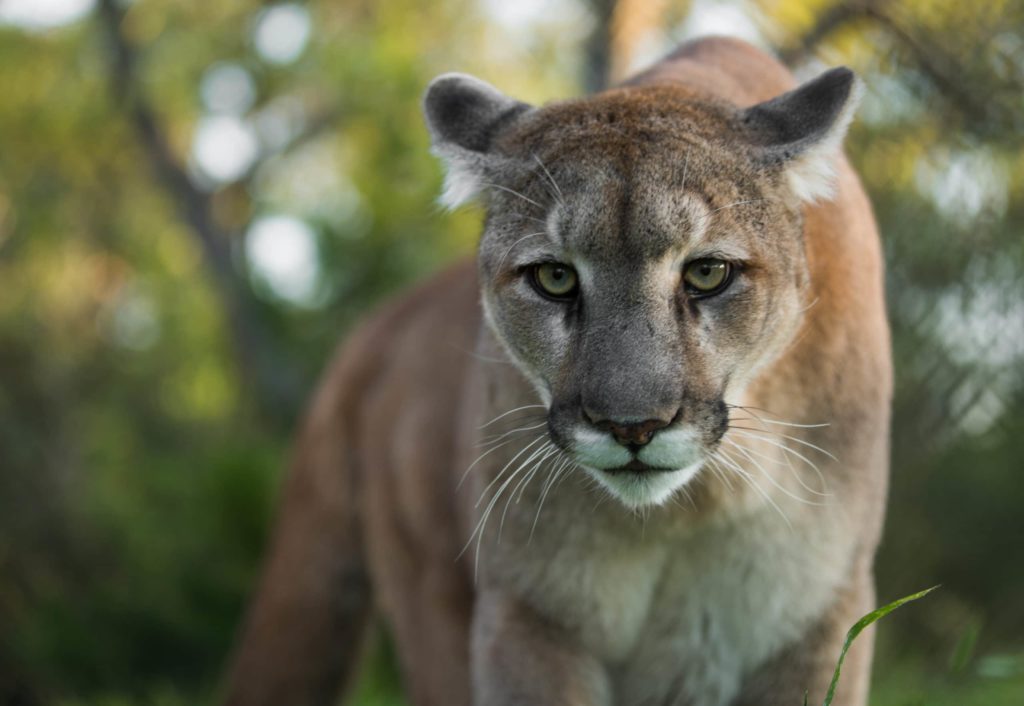Mountain lion attacks are on the rise. Of the fifty recorded attacks in the past 100 years, most of the attacks have occurred in the last twenty years. And most attacks have been in states that no longer allow mountain lion hunting such as California. Mountain lions will continue to thrive and increase in numbers. If you are going to be in mountain lion country, you should be aware of some life-saving facts about the them.
How to avoid mountain lion attacks:
- Mountain lions consider anything on four legs fair game, but the sight of an unnaturally erect animal results in some confusion on the part of the beast… so emphasize that. Appear as large as you possibly can by spreading your arms and standing on your tiptoes.
- 70% of mountain lion attacks were on children and in recent years, that figure has climbed to 90%. If a child is present in a mountain lion encounter, the child should be picked up by an adult, while bending at the knees to maintain an erect position.
- If a mountain lion attack is unavoidable, the best recommendation is to “Fight Back! Never run!” Running can trigger an instinct to chase. Escape by running is impossible.
- If you don’t have a firearm with you (gasp), a large stick or rock may help your chances. However, picking them up from the ground should be done quickly and carefully. Statistics show that cases where rocks and sticks, even fishing rods and fists, have prevented serious injury or death in lion conflicts.
- In all cases, you should constantly face the animal. Retreating, without turning your back may be a good option.
A determined house cat can rip you to shreds and there’s no way you can retaliate in time to prevent serious injury… So just imaging what a mountain lion can do. Be careful out there.
A note from one of our readers:
Wake up America, mountain lion attacks are much more common than the Ca. Fish & Wildlife admit. Chiefly because they are the ones that by overhunting the state’s mule deer during the rut, for a large part, took away their natural prey. For example the San Bernardino mountain deer herd was estimated at 24,000 in the mid-fifties and now it, at best tallies 4,000.Since then there have been a score of disappearances in the forest since the mid-fifties and not a single one was ever tied to lions.
For the rest of the story read Clarion’s review of my book, “The Cost of Being Green Before Green was Cool: A 51 yr. Odyssey“, posted below.
Clarion Review:
ECOLOGY & ENVIRONMENT
The Cost of Being Green before Green Was Cool: A 51 Yr. Odyssey T. J. Elsbury Xlibris 978-1-4797-9421-8 Four Stars (out of Five)
In-depth and well-documented research bolsters this emotive account of wildlife mismanagement.
T. J. Elsbury’s The Cost of Being Green Before Green was Cool: A 51 yr. Odyssey affirms that state wildlife agency mismanagement of the mule deer population in western states has led to the “mysterious” disappearance of numerous children and adults. His controversial debut book reveals how these disappearances can be traced to the cumulative effects of policies that led the deer’s natural predators to seek out other prey or face starvation. Elsbury’s passionate, eloquent, and meticulously documented book is a testament to one man’s struggle to warn government wildlife agencies that their incorrect understanding and mismanagement of the mule deer population is putting ecosystems and human lives at risk. The book begins with a moving dedication to the children that he “could not save”—all victims of mountain lion, coyote, or bear attacks. Elsbury’s dedicated efforts to get to the bottom of the problem challenged the egos of powerful officials and those who funded their rise to power, and exposed the misdoings, cover-ups, perjuries, and the cooking of records engaged in by agency employees. As a result, Elsbury was harassed, threatened, and arrested. He convincingly demonstrates his contentious relationship with government wildlife agencies led to losing custody of his granddaughter, a loss he grieved deeply. His detailed explanations of those events provide a chilling exposé of the failures of the American “justice” system.
Elsbury calls on wildlife biologists to “quit rewriting history and take personal responsibility for their mistakes” instead of blaming every downturn in deer populations on weather, development, pathogens, or the curtailing of wildfires and logging. The truth of the matter, he argues, is the downturn is due to the wildlife managers “holding of general buck hunts during the rut and the taking of exorbitant numbers of breeding age females from select herds.” Elsbury’s engaging stories benefit from his long personal history in hunting and trapping, taxidermy, and wildlife photography. The author holds undergraduate degrees in wildlife biology, mass media, and journalism, received a Xi Sigma Pi (Forest Resources Scholarship Achievement Award), and is a member of the College of Natural Resources Society.
On a positive note, the book is thoroughly researched and annotated, with a detailed table of contents, an extensive bibliography, and a helpful appendix filled with charts, lists, correspondence (official and otherwise), and copies of relevant newspaper articles; the book is also well indexed. The book’s cover is attractive and the back matter is sufficiently informative.
Overall, Elsbury’s work is a highly valuable contribution to the literature on wildlife management and ecology. It is recommended reading for wildlife management professionals, scientists, journalists, hunters, and concerned citizens.
Kristine Morris
